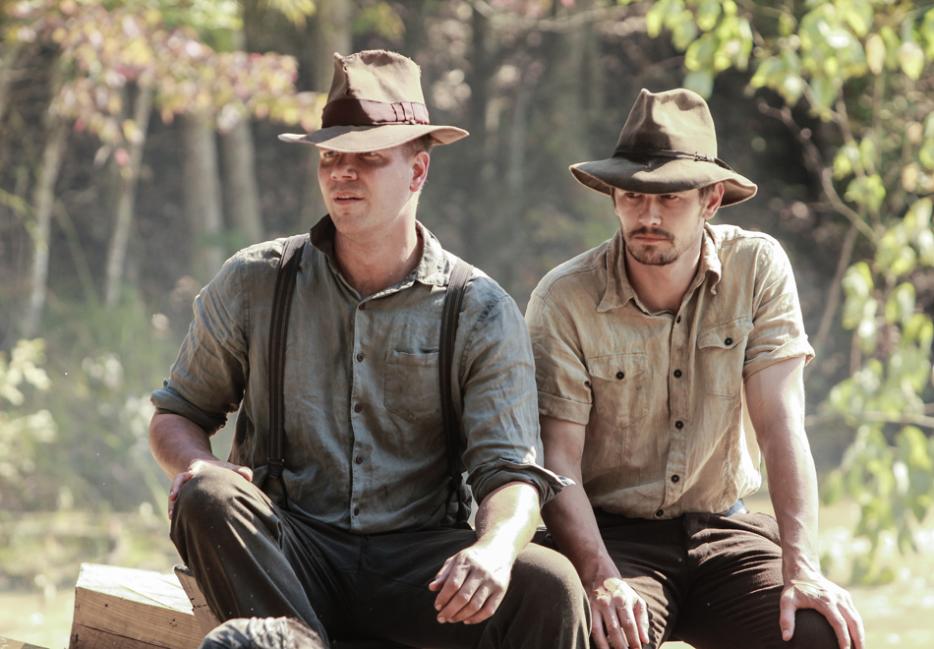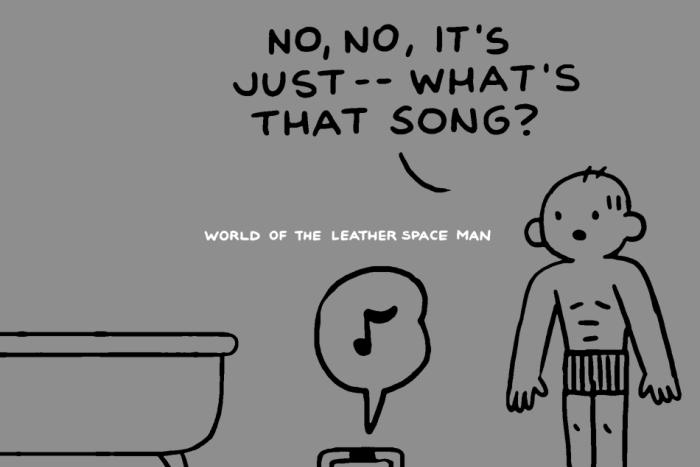James Franco made a good movie. I’m as surprised as the next wag, but As I Lay Dying, which Franco co-wrote and directed based on the novel by William Faulkner, is sturdy on its legs, driven by strong performances, stylistic ingenuity, and (perhaps the biggest surprise from the star of Rise of the Planet of the Apes) a kind of mature restraint.
With a smirk, the review in Film Comment praised its “drab adequacy,” but As I Lay Dying is better than that, given that the source material has always been considered unfilmable. To get around Faulkner’s internal dialogue and multiple points of view, Franco uses a split-screen that distracts at first but settles comfortably into itself. In fact, if there’s a narrative problem here, it has nothing to do with the film, but with the narrative of James Franco’s career: bankable actor reads important books and aspires to auteur-hood above and beyond his station in life, commits Attempted Virtuosity.
People like this we expect to crash and burn, and we enjoy it. It’s part celebrity Schadenfreude, part social sanction on arrogance. This film should flop not because it’s formally difficult, but because Franco himself is probably annoying. He read Faulkner in high school like the rest of us, or worse, he read it recently in grad school and got highbrow ideas. Because Rise of the Planet of the Apes earned $177-million in box office gross (and he got an Oscar nomination for 127 Hours) he found Hollywood’s ear without much effort. As I Lay Dying presents as self-indulgence: this is not art, but a rich boy’s hobby, like George W. Bush’s paintings. And so on.
Imagine how your worldview would topple if George Bush’s paintings turned out to be good. I would like to write a screenplay about a villainous U.S. president who started bloody wars, tortured civilians, and ruined the economy who retires and then produces extraordinary art. His handlers, seeing an existential threat to their political brand, substitute his paintings for those of an eight-year-old, for the sake of social stability and the flattering of preconceived notions on which the American way depends. At some point there’s a car chase.
But it would never get made, unless I bankrolled it myself. And this is the route James Franco will take if his next films do similar box office earnings as As I Lay Dying ($17,000 in gross, then straight to iTunes), at which point he’s in good company: the history of Hollywood tells us that the actor-turned-director with highbrow ideas is first tolerated, but then marginalized for his lack of commitment to commerce. This is the trail blazed first by Orson Welles, and then John Cassavetes, bankable actors who went on to make their own films, most of which flopped financially and as such were easily marginalized by the industry in which they were made.
Cassavetes, like Welles, was less interested in toppling expectations by making good films, than in changing how they were made in the first place—in competing with Hollywood not despite his lack of credentials but because of them. He was an actor who made B-grade TV dramas like Johnny Staccato and who went on to star in major films includingThe Dirty Dozen and Rosemary’s Baby, but he only acted to pay for his own independent projects. In making films, camera focus, lighting, even the script were all secondary to the performance of the actor who was free to interpret his or her role without explicit direction. For the actors, the loose atmosphere was both liberating and baffling: some begged for more direction, for Cassavetes to explain what the movie was about. In fact, he was often unsure himself, relying on the organics of improvisation. According to film scholar Ray Carney, in his exhaustive biography called Cassavetes on Cassavetes, which relies heavily on the filmmaker’s own words, it was common for him to tell an actor, by way of direction, to “do that thing you did when I was over at your house last weekend.”
If there’s a narrative problem here, it has nothing to do with the film, but with the narrative of James Franco’s career: bankable actor reads important books and aspires to auteur-hood above and beyond his station in life, commits Attempted Virtuosity.
This was heresy. In Hollywood actors were meat, and movies were made on the strength of story, the cinematographer’s eye, and the director’s military precision in combining all of the above. But Cassavetes preferred to discuss, argue, cajole, experiment, and collaborate in pursuit of some elusive truth that the camera (provided it was loaded with film) might catch. “Sometimes,” he said, “the scenes would reflect things that we didn’t like to find out: how idiotic we were or how little we had to do with ourselves, how uptight we were. We felt that it was important to find a way to have the courage to put that out on the line for whatever it was, even if the picture itself would not be exciting.”
Reaction to the results was inevitably mixed. In 1968, Variety called Faces, his second feature, “an overblown opus that never comes to life,” but in the New York Times Renata Adler called it the “strongest, bluntest, most important American movie of the year.” At Harlem’s Apollo Theatre, the first two nights of A Woman Under The Influence grossed a total of $2.50. But the film scored two Oscar nominations, for Gena Rowlands as Best Actress and Cassavetes as Best Director: his movies were box office poison but somehow managed to find the sympathetic movie-goer who was moved by whatever Cassavetes had teased out of his actors. And this is before the idiosyncratic, cockeyed, performance-driven independent film became a genre of its own.
But at the time Cassavetes was guilty of making films that refused to flatter preconceived notions: short on plot, structure, sharp dialogue and resolution. It was an affront to Hollywood that Johnny Staccato would dare to re-invent the motion picture, to knock the writer, producer and director off their canvas-back stools in favour of an impenetrable, two-hour New York studio improvisation exercise. But the movies were good. Difficult, often clumsy, and short on narrative logic, but good in the way that some art simply is. The problem lies in an industry where art is valued but not encouraged, due to its inherent risk to shareholder value: bigger and simpler is better than small and complicated. “It’s just the stupidity,” Cassavetes says in the Carney book, “of not allowing certain pictures to be made simply because they’re not expensive enough. You have to kill yourself to make an expensive picture out of an inexpensive movie, in order to suit the economic standards everyone is used to. Why? It’s a camera and some people—why should that cost more than a five-story building?”
But the business has changed, to James Franco’s advantage. The risk that his work will be dismissed as the rubber plaything of a toothy pretty-boy is mitigated by the fact that Hollywood is no longer a place where his kind is doomed to failure, as it was for Cassavetes and Orson Welles. It is possible to make a movie on a modest budget that has no hope of commercial success and skip the whole business of theatrical release, send it straight to iTunes, as has happened with As I Lay Dying. It was never meant for theatres but for the boutique, at-home audience who will load it out of curiosity, given the low stakes involved: no night out, no babysitting costs, no need to sit through it if the split-screen gets on your nerves. And for the industry, no distribution costs. Meanwhile the mainstream blockbuster audience can happily ignore it.
Other actors will follow suit. And some of their movies will be good, surprisingly so. But it’s important for Franco to remember, if he shakes the hobbyist’s reputation and keeps up the better-than-drably-adequate work, that he owes his Laurel Canyon house to John Cassavetes.






